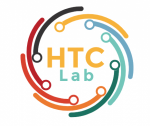The two figures are the interesting parts:
Abstract: The Internet revolution in 1990, followed by the data-driven and information revolution, has transformed the world as we know it. Nowadays, what seam to be 10 to 20 years ago, a science fiction idea (i.e., machines dominating the world) is seen as possible. This revolution also brought a need for new regulatory practices where user trust and artificial Intelligence (AI) discourse has a central role. This work aims to clarify some misconceptions about user trust in AI discourse and fight the tendency to design vulnerable interactions that lead to further breaches of trust, both real and perceived. Findings illustrate the lack of clarity in understanding user trust and its effects on computer science, especially in measuring user trust characteristics. It argues for clarifying those notions to avoid possible trust gaps and misinterpretations in AI adoption and appropriation.
Latest posts by Ryan Watkins (see all)
- From Lived Experience to Insight: Unpacking the Psychological Risks of Using AI Conversational Agents - May 30, 2025
- Leveraging Dual Process Theory in Language Agent Framework for Real-time Simultaneous Human-AI Collaboration - May 29, 2025
- Identifying, Evaluating, and Mitigating Risks of AI Thought Partnerships - May 26, 2025
